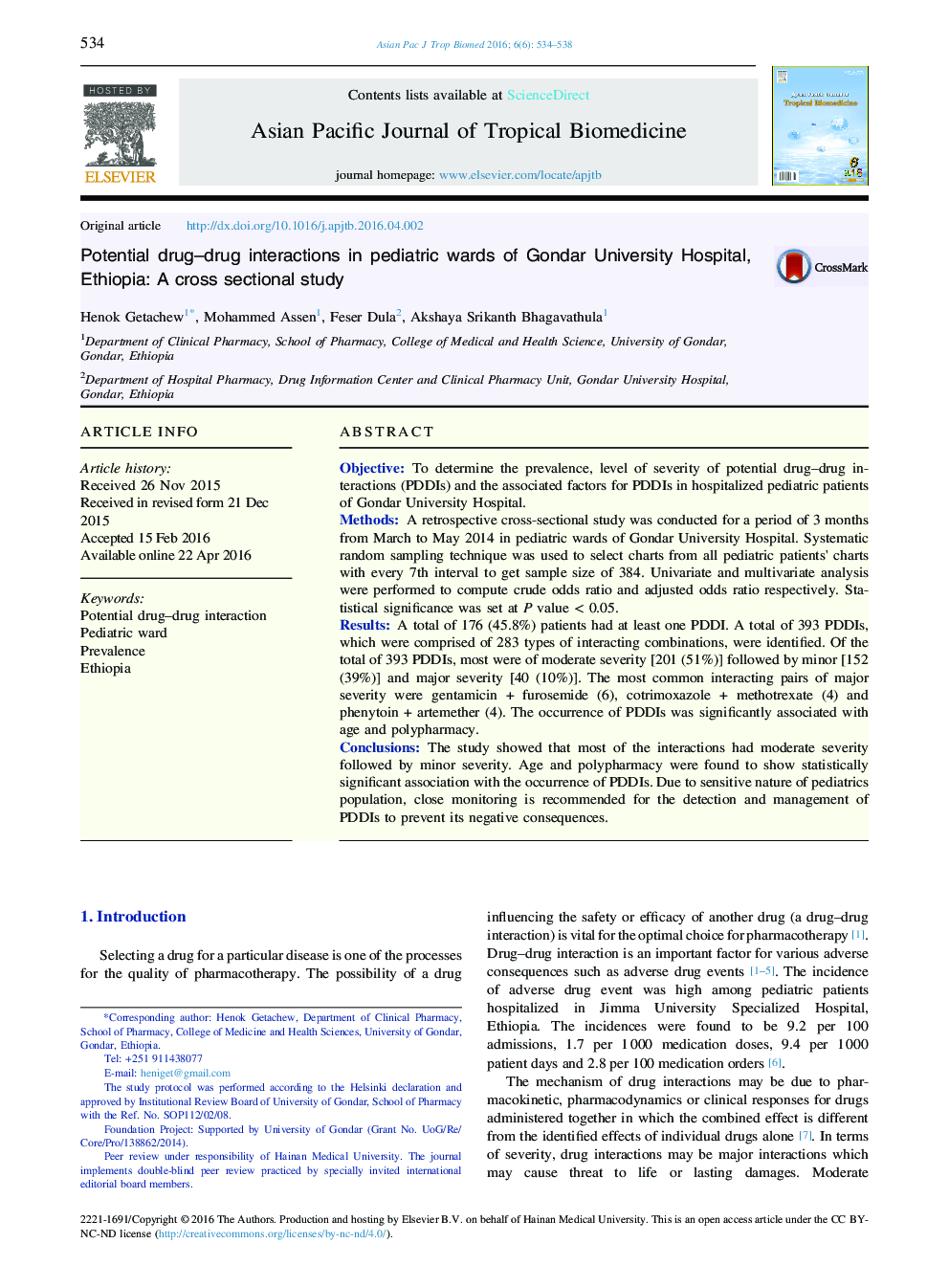| Article ID | Journal | Published Year | Pages | File Type |
|---|---|---|---|---|
| 2032470 | Asian Pacific Journal of Tropical Biomedicine | 2016 | 5 Pages |
ObjectiveTo determine the prevalence, level of severity of potential drug–drug interactions (PDDIs) and the associated factors for PDDIs in hospitalized pediatric patients of Gondar University Hospital.MethodsA retrospective cross-sectional study was conducted for a period of 3 months from March to May 2014 in pediatric wards of Gondar University Hospital. Systematic random sampling technique was used to select charts from all pediatric patients' charts with every 7th interval to get sample size of 384. Univariate and multivariate analysis were performed to compute crude odds ratio and adjusted odds ratio respectively. Statistical significance was set at P value < 0.05.ResultsA total of 176 (45.8%) patients had at least one PDDI. A total of 393 PDDIs, which were comprised of 283 types of interacting combinations, were identified. Of the total of 393 PDDIs, most were of moderate severity [201 (51%)] followed by minor [152 (39%)] and major severity [40 (10%)]. The most common interacting pairs of major severity were gentamicin + furosemide (6), cotrimoxazole + methotrexate (4) and phenytoin + artemether (4). The occurrence of PDDIs was significantly associated with age and polypharmacy.ConclusionsThe study showed that most of the interactions had moderate severity followed by minor severity. Age and polypharmacy were found to show statistically significant association with the occurrence of PDDIs. Due to sensitive nature of pediatrics population, close monitoring is recommended for the detection and management of PDDIs to prevent its negative consequences.
